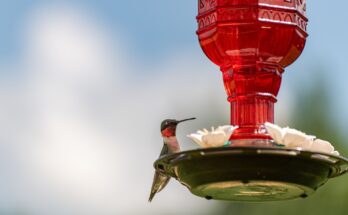Rare Biennial Flowers That Bring Unexpected Beauty To Your Garden
While annuals bring quick blooms and perennials can be a labor of love, biennials are like the sweet spot between the two. These plants require a little commitment and patience but provide high rewards in terms of charm. Biennials live for about two years, the first of which they spend cultivating roots and foliage before blooming in the second year. Some biennials have slightly longer life cycles, and the unpredictability and required maintenance tend to make them a less popular option. However, the rare beauty and character that certain biennials like ‘Ravenswing,’ Canterbury bells, annual honesty, and standing cypress can add to a garden are well worth the maintenance.
Many biennials are self-seeding. This means that after the original plant dies, its seeds could give rise to new plants in the same area. Once you understand the lifecycle of your biennials and create a solid maintenance plan, upkeep could be minimal aside from occasional pruning and repotting.
Ravenswing and Canterbury bells
‘Ravenswing’ (Anthriscus sylvestris ‘Ravenswing’) is a type of cow parsley with deep, purple-black leaves. When in bloom, this plant presents a beautiful head of white flower clusters, occasionally tinged with pink. The striking contrast between the flowers and the deep purple foliage makes this plant a spectacular addition to any flower bed. The dense floral clusters are quite attractive to beneficial insects and key pollinators like orange-tip butterflies and bees.
‘Ravenswing’ can be sown from seed outdoors in the fall or spring. The secret to a healthy ‘Ravenswing’ plant lies in well-drained, moderate to dry soil and full sun. To avoid cultivating new ‘Ravenswing’ plants that have lost their signature purple hue, thin out light-green seedlings when they emerge. Note that ‘Ravenswing’ can become aggressive without some intervention. If overgrowth is a concern, be sure to deadhead the flowers promptly. Mistakes to avoid while deadheading include clipping all the flowers at one time and cutting too far down the stem.
Canterbury bells (Campanula medium), is another gorgeous biennial. This plant grows to about 3 feet tall and features a stalk of bell-shaped blossoms in beautiful hues like soft blue, pink, white, and purple. It grows well in full sun or partial shade and moist, well-draining soil. A good DIY mulch like pine needles can help keep the soil moist. Canterbury bells are great for pollinator gardens and anyone looking for dramatic blooms.
Annual honesty and standing cypress
Annual honesty, or the silver dollar plant (Lunnaria annua), is another beautiful biennial to consider. Annual honesty plants bloom in the summer with pink, white, or purple flowers. However, one of the most intriguing features of this plant are its translucent, paper-thin seed pods that stick around after most of the foliage has died back. In this dried, papery state, the plant’s seed pods can add texture and unique beauty to dried flower arrangements. They grow well in moist, well-drained soil and require access to full sun. However, they could use a bit of shade in hotter summer climates.
Standing cypress (Ipomopsis rubra) can grow up to 6 feet tall and features beautiful, bright red tubular flowers, although some varieties feature orange or yellow blossoms. These plants will help you attract hummingbirds to your garden; they’re also a magnet for pollinators. These plants bloom in early spring and summer, but you can enjoy flowers longer by trimming the stalks after blooms die down. Sow the seeds in your garden in the fall and let them overwinter.



